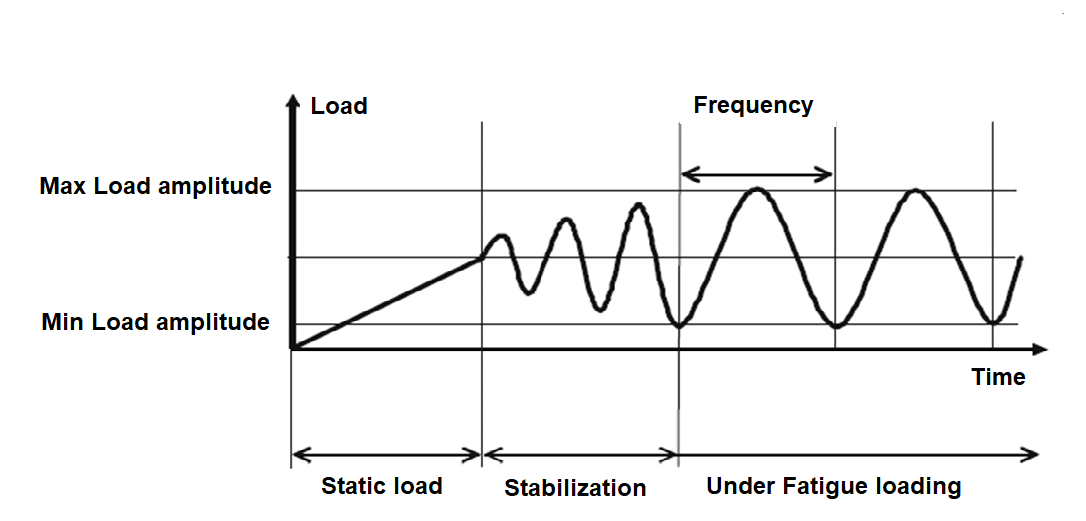Tensile testing is a way to measure how strong something is. Imagine you have a piece of string or a rubber band, and you want to know how much you can pull on it before it breaks. That’s what tensile testing does, but with different materials like metals, plastics, and even some foods.
Scientists and engineers use machines to pull on the material until it breaks, and they measure how much force it takes to do that. They also look at how much the material stretches or gets longer before it breaks. By doing this, they can learn more about how strong the material is and how it will behave in different situations.
Tensile testing is important because it helps us understand how strong things are and how they will react to different forces. This knowledge can be used to design safer buildings, cars, airplanes, and other things we use in our everyday lives.

Table of Contents
Daily Life Significance of Tensile Testing
- Quality control in manufacturing: Tensile testing is often used in the manufacturing process to ensure that materials and products meet certain quality standards. This helps to ensure that the products we use every day are safe and reliable.
- Design of buildings and infrastructure: Engineers use tensile testing to design buildings, bridges, and other infrastructure. By understanding the strength of different materials, they can design structures that are safe and will hold up over time.
- Safety in transportation: Tensile testing is used in the automotive and aerospace industries to test the strength of different materials and components. This helps to ensure that cars, airplanes, and other forms of transportation are safe and reliable.
- Medical implants: Tensile testing is used to test the strength of materials used in medical implants such as artificial joints, dental implants, and heart valves. This helps to ensure that these devices are safe and effective.
- Consumer products: Tensile testing is used to test the strength of everyday consumer products such as toys, furniture, and electronics. This helps to ensure that these products are safe and durable for everyday use.
ASTMS standards for testing Polymers, Thermoset Composites, and Metals
| Material Type | ASTM Standard | Title | Standard Specimen Size | Examples of Materials |
| Polymers | ASTM D638 | Standard Test Method for Tensile Properties of Plastics | Type I: 12.7 mm width, 3.2 mm thickness, 165 mm length | Polyethylene, polypropylene, polycarbonate |
| Polymers | ASTM D1708 | Standard Test Method for Tensile Properties of Plastics by Use of Micro tensile Specimens | Type V: 3.2 mm width, 0.25 mm thickness, 25 mm length | Thin films, coatings |
| Polymers | ASTM D412 | Standard Test Methods for Vulcanized Rubber and Thermoplastic Elastomers – Tension | Type C: 6.4 mm width, 3.2 mm thickness, 25.4 mm length | Rubber, silicone, elastomers |
| Thermoset Composites | ASTM D3039 | Standard Test Method for Tensile Properties of Polymer Matrix Composite Materials | Type 1A: 12.7 mm width, 165 mm length, 3.2 mm thickness | Fiberglass, carbon fiber reinforced polymers (CFRP), epoxy resins |
| Thermoset Composites | ASTM D638 | Standard Test Method for Tensile Properties of Plastics | Type I: 12.7 mm width, 3.2 mm thickness, 165 mm length | CFRP, glass fiber reinforced polymers (GFRP), thermoset plastics |
| Metals | ASTM E8/E8M | Standard Test Methods for Tension Testing of Metallic Materials | Type I: 12.5 mm width, 50 mm gauge length | Steel, aluminum alloys, copper alloys |
| Metals | ASTM A370 | Standard Test Methods and Definitions for Mechanical Testing of Steel Products | Depends on product form and thickness | Steel plates, bars, tubes |
| Metals | ASTM B557 | Standard Test Methods for Tension Testing Wrought and Cast Aluminum- and Magnesium-Alloy Products | Type A: 12.7 mm width, 1.6 mm thickness, 127 mm length | Aluminum alloys, magnesium alloys |
Common formulas used in tensile testing
| Formula | Description |
| σ = F/A | Stress (σ) is equal to force (F) divided by the cross-sectional area (A) of the sample. |
| ε = (L – L0)/L0 | Strain (ε) is equal to the change in length (L – L0) divided by the original length (L0) of the sample. |
| E = σ/ε | Young’s modulus (E) is equal to stress (σ) divided by strain (ε) within the elastic deformation range. |
| σy | Yield stress (σy) is the stress at which the material starts to deform plastically. |
| εy | Yield strain (εy) is the strain at which the material starts to deform plastically. |
| δ = (L – L0)/L0 x 100 | Percent elongation at break (δ) is the percentage of the original length (L0) that the sample elongates before breaking. |
| εf | Strain at failure (εf) is the maximum strain that the sample can withstand before breaking. |
| σf | Ultimate tensile strength (σf) is the maximum stress that the sample can withstand before breaking. |
| Toughness | The energy required to break the sample, calculated as the area under the stress-strain curve until the point of failure. |
Commonly Machines Used for Tensile Testing
| Name of Machine | Characteristics | Advantages | Limitations | Type of Sample |
|---|---|---|---|---|
| Universal Testing Machine (UTM) | Used for tension, compression, bending and shear testing | Can perform a variety of tests, widely available | May be expensive, requires regular maintenance | Various types of materials and specimens |
| Tensometer | Measures elongation of a specimen under tension | High accuracy, suitable for small specimens | Limited to measuring elongation, cannot measure stress | Thin or small specimens |
| Instron | Used for tension, compression, bending and fatigue testing | Can perform a variety of tests, widely available | May be expensive, requires regular maintenance | Various types of materials and specimens |
| Stress-Strain Tester | Measures stress and strain of a material under tension | Provides comprehensive data on material behavior | Limited to testing uniaxial tension | Uniaxial tension specimens |
| Electronic Universal Testing Machine | Precise, automated machine used for tension, compression, bending and shear testing | Provides accurate and repeatable results, can test a wide range of materials | High cost, may require specialized training to operate | Various types of materials and specimens |
| Hydraulic Universal Testing Machine | Operates on hydraulic power and used for tension, compression, bending and shear testing | High capacity, can test large specimens | Slower than electronic machines, requires regular maintenance | Various types of materials and specimens |
- BCl3 Lewis Structure in four simple steps - November 1, 2023
- PH3 Lewis Structure in four simple steps - October 8, 2023
- PF3 Lewis structure in four simple steps - September 24, 2023



